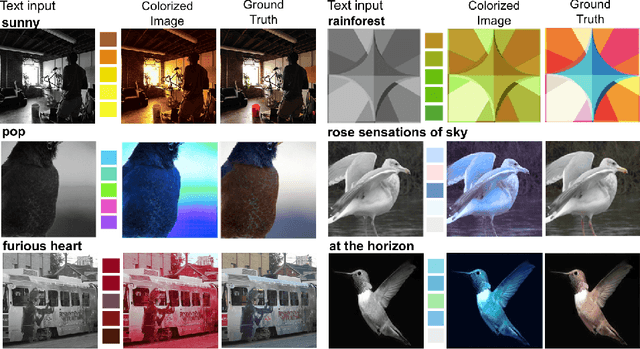David K. Park
Towards an Introspective Dynamic Model of Globally Distributed Computing Infrastructures
Jun 24, 2025Abstract:Large-scale scientific collaborations like ATLAS, Belle II, CMS, DUNE, and others involve hundreds of research institutes and thousands of researchers spread across the globe. These experiments generate petabytes of data, with volumes soon expected to reach exabytes. Consequently, there is a growing need for computation, including structured data processing from raw data to consumer-ready derived data, extensive Monte Carlo simulation campaigns, and a wide range of end-user analysis. To manage these computational and storage demands, centralized workflow and data management systems are implemented. However, decisions regarding data placement and payload allocation are often made disjointly and via heuristic means. A significant obstacle in adopting more effective heuristic or AI-driven solutions is the absence of a quick and reliable introspective dynamic model to evaluate and refine alternative approaches. In this study, we aim to develop such an interactive system using real-world data. By examining job execution records from the PanDA workflow management system, we have pinpointed key performance indicators such as queuing time, error rate, and the extent of remote data access. The dataset includes five months of activity. Additionally, we are creating a generative AI model to simulate time series of payloads, which incorporate visible features like category, event count, and submitting group, as well as hidden features like the total computational load-derived from existing PanDA records and computing site capabilities. These hidden features, which are not visible to job allocators, whether heuristic or AI-driven, influence factors such as queuing times and data movement.
GST-UNet: Spatiotemporal Causal Inference with Time-Varying Confounders
Feb 07, 2025Abstract:Estimating causal effects from spatiotemporal data is a key challenge in fields such as public health, social policy, and environmental science, where controlled experiments are often infeasible. However, existing causal inference methods relying on observational data face significant limitations: they depend on strong structural assumptions to address spatiotemporal challenges $\unicode{x2013}$ such as interference, spatial confounding, and temporal carryover effects $\unicode{x2013}$ or fail to account for $\textit{time-varying confounders}$. These confounders, influenced by past treatments and outcomes, can themselves shape future treatments and outcomes, creating feedback loops that complicate traditional adjustment strategies. To address these challenges, we introduce the $\textbf{GST-UNet}$ ($\textbf{G}$-computation $\textbf{S}$patio-$\textbf{T}$emporal $\textbf{UNet}$), a novel end-to-end neural network framework designed to estimate treatment effects in complex spatial and temporal settings. The GST-UNet leverages regression-based iterative G-computation to explicitly adjust for time-varying confounders, providing valid estimates of potential outcomes and treatment effects. To the best of our knowledge, the GST-UNet is the first neural model to account for complex, non-linear dynamics and time-varying confounders in spatiotemporal interventions. We demonstrate the effectiveness of the GST-UNet through extensive simulation studies and showcase its practical utility with a real-world analysis of the impact of wildfire smoke on respiratory hospitalizations during the 2018 California Camp Fire. Our results highlight the potential of GST-UNet to advance spatiotemporal causal inference across a wide range of policy-driven and scientific applications.
Coloring with Words: Guiding Image Colorization Through Text-based Palette Generation
Aug 07, 2018



Abstract:This paper proposes a novel approach to generate multiple color palettes that reflect the semantics of input text and then colorize a given grayscale image according to the generated color palette. In contrast to existing approaches, our model can understand rich text, whether it is a single word, a phrase, or a sentence, and generate multiple possible palettes from it. For this task, we introduce our manually curated dataset called Palette-and-Text (PAT). Our proposed model called Text2Colors consists of two conditional generative adversarial networks: the text-to-palette generation networks and the palette-based colorization networks. The former captures the semantics of the text input and produce relevant color palettes. The latter colorizes a grayscale image using the generated color palette. Our evaluation results show that people preferred our generated palettes over ground truth palettes and that our model can effectively reflect the given palette when colorizing an image.
* 25 pages, 22 figures
 Add to Chrome
Add to Chrome Add to Firefox
Add to Firefox Add to Edge
Add to Edge